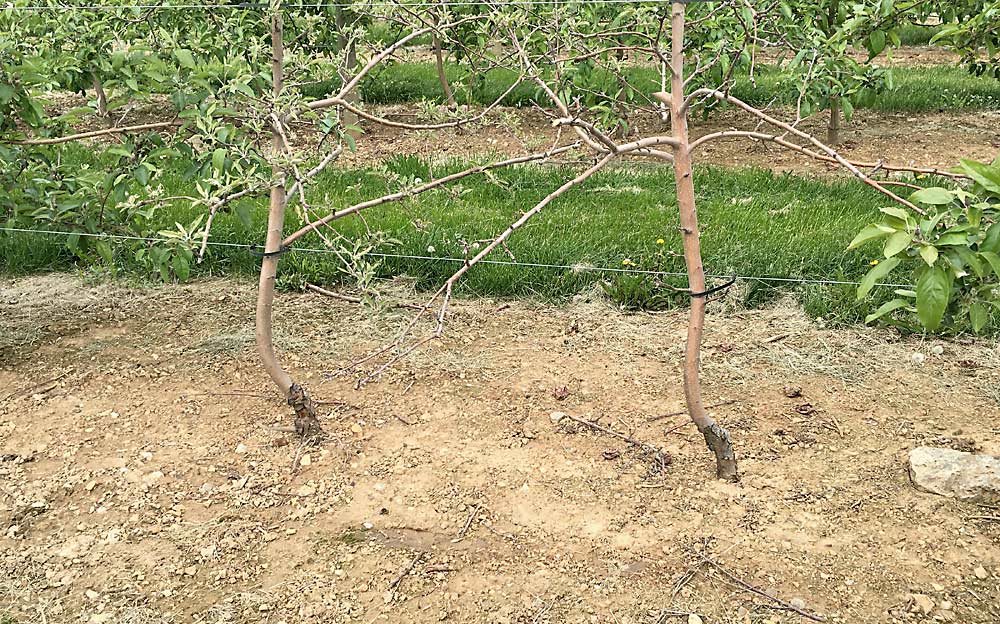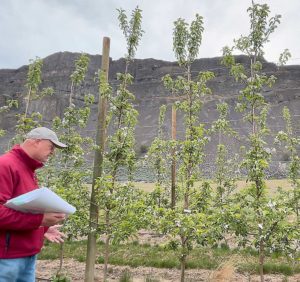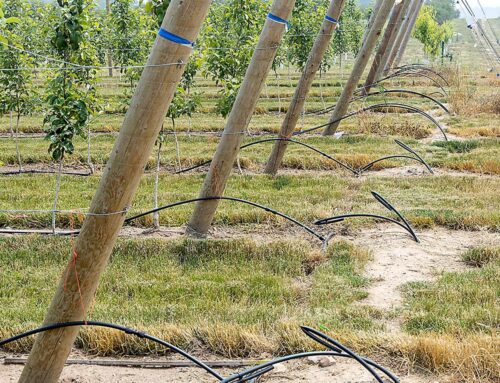
Commercial nursery catalogs offer more than 25 apple rootstocks for sale, and nurseries add more every year. They offer more than 75 varieties, too. That’s a lot of combinations for growers to choose from — without even factoring in their local climate and soil, tree density, training systems and management practices.
With so many variables at play, finding the ideal match of rootstock and cultivar has never been easy — even for scientists who study the topic.
“What makes it difficult is that these factors are not additive, they’re interactive,” said Richard Marini, a recently retired Penn State University horticulture professor. “When you change one of these factors, it’s going to change how the trees respond to the other factors.”
Marini, who spoke during the International Fruit Tree Association’s annual conference in Grand Rapids, Michigan, in February, spent decades studying rootstocks. He did extension work in New Jersey, Virginia and Pennsylvania over his four-decade career, and he participated in many rootstock trials as a member of the NC-140 Regional Rootstock Research Project.
What growers really want is a stable rootstock that consistently produces above average, regardless of scion or other factors, Marini said.
But every rootstock has strengths and weaknesses. Some are more productive than others. Some are more vigorous than others — and vigor also is affected by climate, soil fertility and tree density. Different rootstocks have different effects on fruit size, color and disorders such as bitter pit. Some are more sensitive to drought, fire blight or soil pathogens. Some take up nutrients better than others. Some affect biennial bearing in Honeycrisp. Some, if paired with brittle varieties, have weak graft unions. A rootstock’s performance can differ even within the same farm, depending on soil type. Sometimes, growers need different rootstocks in the same block, Marini said.
Each region has its own challenges, too. In Eastern orchards, where Marini spent his career, growers often plant on hillsides, for frost protection. But because of erosion, the higher they plant, the thinner the soil. In Virginia, the transition to high-density plantings was slowed by a lack of smaller tractors and sprayers. Growers had to keep their rows wide so they could move equipment through. As plantings continue to get tighter, equipment will need to get smaller. That’s something growers must keep in mind when planning for the future, he said.

Financial and land resources play a role, too. Marini has seen growers put in relatively low-density plantings because they own a lot of land but don’t have a lot of capital, and they want relatively inexpensive plantings. Other growers have limited land and need the maximum yields offered by high-density plantings.
Of all the factors that go into making a rootstock work, Marini said grower management is probably the most important.
“Some growers are really good managers, and they can make something work. Other growers try to do the same thing, and it’s a failure,” he said. “It may not be their management expertise but whether or not they’re willing to spend the time or energy to make it work.”
The importance of research
Rootstock trials are no less complicated. To truly get a sense of a rootstock’s performance, it needs to be in the ground long enough to be exposed to every stress imaginable. It needs to be tested in different soils and with different varieties and training systems. But rootstock trials are expensive to maintain, rarely lasting more than a decade — which makes it difficult to gauge a rootstock’s performance over the life of an orchard.
“It’s hard to know how much things would change if we could leave the trees in the ground for another 10 years,” Marini said. “You just have to realize that what you’re looking at after 10 years may not be what you’re looking at after 20.”
In the 1980s and 1990s, Marini and other scientists around the country recognized the need for more thorough rootstock evaluations, especially for the new dwarfing rootstocks that were being released at the time. Results from their NC-140 trials helped push the apple industry toward high-density plantings in the following decades.
The scientists also learned the benefits of conducting rootstock trials in multiple locations. They realized, for example, that the cost of posts varies around the country, which can affect the choice of growing system. In regions where posts are more expensive, growers tend to adopt systems that use fewer posts, he said.
Marini encouraged growers to do their own research — to test the performance of rootstocks, varieties and training systems on their own ground.
“You can get ideas from other growers and from researchers, but there’s no substitute for doing research on your own farm,” he said.
—by Matt Milkovich







wow amazing information.